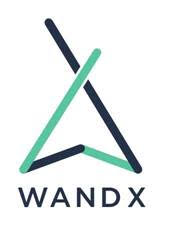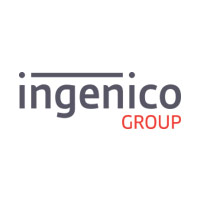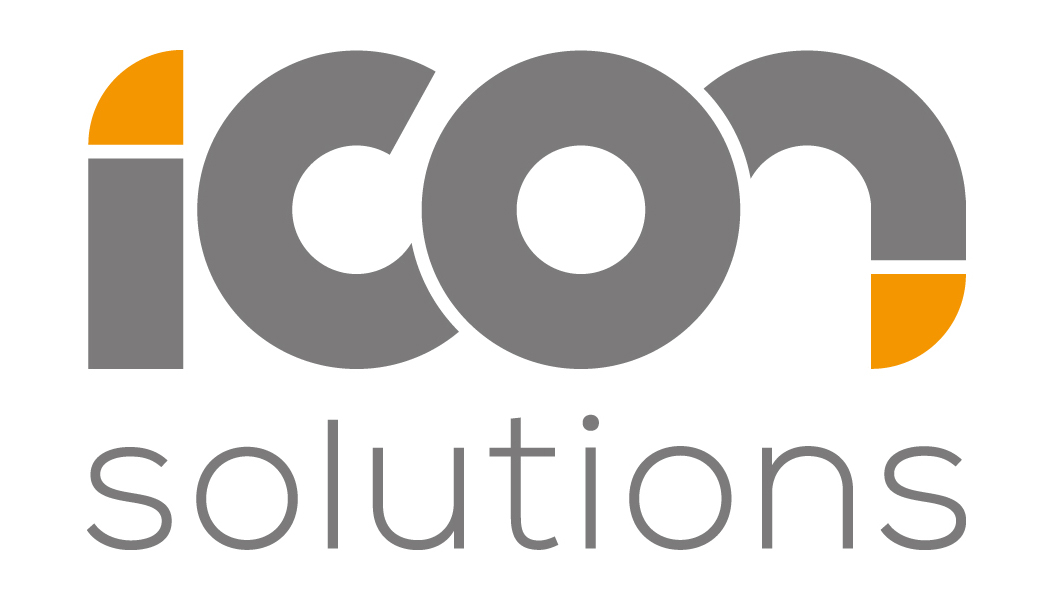Published
- 01:00 am

The WandX token sale is to close at midnight GMT on Tuesday, December 5 2017. WandX, a platform which allows users to create and trade any ERC20 Token entirely peer to peer, is India’s first token sale, and the first Ethereum Token (aka ERC20 Token) exchange to be launched in India.
India is increasingly seen as a hotbed of creative entrepreneurship and, with 65% of its population under the age of 35 and smartphone use growing rapidly, the country’s most ambitious young business people have the technology sector firmly in their sights, not least in relation to the blockchain.
The benefits that such a service brings to customers are huge. It enables worldwide liquidity of ERC20 Tokens and new Tokens to be easily listed and traded. The creation of ERC20 Tokens is useful in a lot of real world use cases such as loyalty points, market research, p2p energy trading, energy finance and microfinance. WandX will be piloting at least one of these use cases in the next two months, which would be a first in its own right.
Unusually for a service product hosting a token sale, WandX is very close to completing its final product. Holders of the WandX token will be able to begin creating bundles of cryptocurrencies after its release onto the Ethereum mainnet on December 10 2017. This would enable new Tokens to easily list on the WandX platform as well as enable liquidity of existing ERC20 Tokens.
Not only is WandX the first high-level blockchain product to come out of India, it is leading the world with a new algorithm built on the Ethereum blockchain which allows for cheaper use of the system by customers and makes it possible for the WandX team to upgrade their Ethereum based smart contracts.
Abhinav Ramesh, the 26-year-old CEO of Bangalore-based WandX (https://www.wandx.co/), explains the utility of the WandX platform: “WandX not only wants to be an ERC20 Token marketplace, but also to enable real-world use cases of the Ethereum blockchain through its APIs and it’s seamless front-end.
“Our real-world pilots in the energy markets will start in the next two months, which will be a first in their own right as well.
“This allows us to not only focus on the ERC20 Token market for now, which is an esoteric market as of now, but also enable real-world applications of the Ethereum blockchain.”
Steering away from the more traditional venture capital route, Abhinav Ramesh decided to fund the development and construction of his ground-breaking platform with a token sale.
Abhinav Ramesh, who has a background in supply-chain and analytics at Ernst & Young, “Until now, cryptocurrency investors have used centralised exchanges to buy and sell different cryptocurrencies, in the hope of growing their assets. With the rise of decentralised exchanges, the difficulty is that the values can be volatile.
“Investors can only exchange an amount of one currency with an equivalent value of another, which is problematic because it makes it more difficult for them to diversify their portfolio and avoid unnecessary risk.
“That’s where WandX comes in. WandX goes a step further than the decentralised exchanges that enable trade between different tokens, and enables users to create – and trade in – baskets of tokens built on the Ethereum blockchain.
“Hence, apart from just catering to the cryptocurrency market, WandX, through its real world use case pilots, will enable even traditional businesses to tokenise their business model.”
Unusually for a product holding a token sale, Abhinav’s team – based in Bangalore, India – have already created a prototype platform.
At the time of going to press, the WandX token sale had raised over $400,000 and becomes the first Indian token sale. At the conclusion of the sale, unsold WAND will be burnt, effectively capping the total number of Wand tokens.
Related News
- 02:00 am

Baker Hill, a leading provider of technology solutions for common loan origination, relationship management and smart data analytics, has entered into a strategic partnership with Lowenstein and Associates®, P.C. to automate the interface between loan origination and core systems by integrating its LenderLink® solution with Baker Hill NextGen™.
Through this integration, Baker Hill further streamlines the loan origination process and makes onboarding a loan more efficient by uploading all loan information into the financial institution’s core banking system. Not only does this level of automation provide significant time savings, but it also eliminates duplicate entry.
“Financial institutions continue to be under immense pressure to improve and speed up the loan onboarding process, which is why partnering with Lowenstein and Associates will be instrumental in delivering the solutions our financial institution clients want and need,” said John M. Deignan, President and CEO of Baker Hill. “By integrating LenderLink® into Baker Hill NextGen™, our clients will be able to quickly move loan information to their core to not only reduce data entry errors, but free up time to focus on other tasks. We look forward to the competitive advantages this partnership will provide.”
The LenderLink® smart-communication technology eliminates double/triple data entry. It automatically assigns key loan characteristics based on loan type and passes that information to the core. By using LenderLink® to move loan information between the loan origination software (LOS) and core, financial institutions reduce data entry errors and reduce time spent by staff. Not only does LenderLink® help increase staff productivity, it facilitates segregation of duties when boarding loans.
“We’re thrilled to partner with Baker Hill and bring LenderLink® to the company’s powerful loan origination system,” said Don Lowenstein, President of Lowenstein and Associates®, P.C. “This integration will not only be valuable to their financial institution clients, but also to consumers, as it will speed the process and ensure accuracy, and ultimately strengthen relationships with account holders.”
Baker Hill NextGen™ is the cloud’s most powerful, cutting-edge common loan origination, risk management, and analytics solution – created by industry leaders to help banks and credit unions of all sizes work smarter, make sound business decisions, and drive more profitable relationships. The solution offers comprehensive loan origination features and a streamlined, fluid workflow with access to one source of data, empowering financial institutions to boost productivity and ultimately drive growth and profitability.
Related News
- 09:00 am

Wealth Migrate, (KPMG Global Fintech Top 50), a global online real estate marketplace, today announced the opening of a new office in the U.K. and the appointment of a new country CEO, as the firm continues to build on its global presence as part of a strategy to meet growing demand from investors.
To better serve its community of investors in this region, Wealth Migrate has opened a new office in London. The new location comes as the firm continues to expand internationally and adds to its already well-established operations in Hong Kong and Shanghai, China, the U.S., Australia and South Africa.
"As a leading FinTech hub and market where we have a good deal of assets, opening a U.K. office has been part of our strategy for a long-time," said Scott Picken, co-founder and CEO of Wealth Migrate. "The new office will allow us to continue to foster relationships with best-in-class proven real estate operators and respond to our investors' increasing appetite for recession-resistant real estate assets in high-quality markets."
Adding to the news of this expansion, Wealth Migrate additionally announced the opening of their U.A.E. office and the appointment of a new U.S. based CEO this week.
To head up the new office, Wealth Migrate has appointed Ken Williams as its CEO of Wealth Migrate, U.K.
Williams has over 20 years' experience in investment banking in addition to extensive knowledge of regulatory and global financial markets. He has held executive roles at well-known financial institutions, such as ING, Deutsche Bank and Sanlam , and earned a reputation of successfully launching, managing and growing businesses in the finance and property sectors.
"Mr. Williams' extensive background working for leading global financial institutions, in the world's highly active global emerging markets, will not only provide exceptional value to our U.K. based investors but undoubtedly add exceptional value to the organization as a whole," said Hennie Bezuidenhoudt, co-founder and chairman of Wealth Migrate. "I could not be more pleased with the growth and the trajectory of the company right now," added Bezuidenhoudt.
"Having worked in the capital markets for 20 years I see personal online investing as the definitive direction for markets," said Ken Williams, CEO of Wealth Migrate, U.K. "It is where online banking was fifteen years ago, people are becoming increasingly aware that they can go direct and cut out the middle-men who take significant fees and capital appreciation off the top. I am excited to have joined Wealth Migrate, deploying revolutionary financial technology to provide investors Globally with access to sustainable real estate markets."
Wealth Migrate's expansion to the U.K. follows a series of notable accomplishments, including:
- Ranking 42nd on KPMG's 2016 Global FinTech list (only firm in its category in the top 50)
- Ranking in top three for FinTech Africa awards
- Conducting over $380m in real estate deals
- Having over $100m in assets under management in the U.S.A. alone
- Securing over $10m+ in seed capital invested
- Having 300% revenue growth YOY for last three years
- Having 11,220 members from 107 countries signed up on the platform & growing at 63.9% per month
- Having investors from 46 countries around the world and growing at 16% per month
In October 2016, the firm was the first global real estate platform integrated on Blockchain thereby reducing friction costs and increasing trust and transparency. This year, the focus has been on dramatically streamlining the user experience with the help of investor feedback thus enabling the long-term vision of making investing as simple as a swipe of a finger and from as little as $1.
Related News
- 05:00 am

QuantHouse, the independent global provider of end-to-end high performance market data and trading through API based technologies, today announced the availability of easy access to Sun Trading’s Systematic Internaliser (SI) platform through its QuantFEED and QuantLINK offering.
Sun Trading is one of the premier providers of bespoke equity streams under the MiFID I regime, and the organisation anticipates a high demand for their liquidity under MiFID II. Previously, only large tier 1 brokers have had the resources to connect to this liquidity directly. By offering simple connectivity via a single API, QuantHouse’s customers are now able to access Sun Trading’s market data and order entry feeds, and access the SI’s liquidity in an efficient and cost-effective manner.
Access to Sun Trading’s SI will be available from QuantHouse’s qh API Ecosystem powered by QuantFEED and QuantLINK. The qh API ecosystem brings together the largest community of buy- and sell-side participants, exchanges, prime brokers, trading venues, hedge funds and market makers with other financial services partners and vendors. With more than 500 participants, members can quickly and easily gain global access to multiple trading venues, technologies or applications, accelerate time to market for new services, streamline infrastructure costs and take advantage of new collaborative opportunities.
Jamal Tarazi, Head of European Trading, Sun Trading, said, “QuantHouse’s ability to deliver connectivity to Sun Trading’s SI liquidity is a critical component for navigating the changing liquidity landscape in 2018. Now that QuantHouse has certified its connectivity to our market data and order entry feeds, we have an efficient manner for QuantHouse’s clients to access our SI liquidity which was previously only accessible to large tier 1 institutions. QuantHouse is helping to open up the market to smaller firms by normalising access to liquidity that would have been inaccessible before and delivering it via an easy to use, uniform solution.”
Stephane Leroy, Business Co-Founder and Chief Revenue Officer, QuantHouse, said, “There is enormous change happening in the market under MiFID II, and our aim is to help clients access these new SIs quickly and easily so they benefit from this new regime. Sun Trading is one of the largest liquidity providers, and by providing connectivity to Sun Trading via QuantHouse’s API ecosystem, clients now have quicker access to better liquidity, without the pain of having to code bespoke APIs.”
Related News

Steve Grob
Director of Group Strategy at Fidessa
I read yesterday that Cboe is bringing forward the launch date for its Bitcoin futures contract in a bid to usurp its rivals at the CME. see more
- 07:00 am

Prysm, Inc., a leading digital workplace platform provider, today announced its Winter ’17 software release featuring a next-generation digital sketchboard, Windows 10 support, and updated design and homepage capabilities. Prysm’s new sketchboard goes far beyond competing solutions, as it allows bi-directional, real-time collaboration for disparate meeting participants along with a natural writing experience, multi-directional resizing, and ability to zoom in and out of the experience for maximum use case flexibility. The sketchboard is also the only whiteboard offering that is part of a complete digital workplace platform, offering a path to an enhanced solution experience.
The Winter ’17 software release supports the continued expansion of Prysm’s collaboration ecosystem, integrating several new features including:
- Windows 10 Support: In-room Prysm collaboration appliances will now support the enterprise-preferred Windows 10 operating system because of its improved security and performance. Following this release, all Prysm collaboration appliances for new orders will ship pre-imaged with Windows 10. End user IT departments will still enjoy the choice of adding their own security image to the Prysm collaboration appliance.
- In-Room Homepage Design: Adopting similar design patterns of Prysm’s award-winning mobile device interface, the new Prysm in-room homepage will provide users with a more engaging and intuitive interface that allows them to quickly get started on projects and workspaces or pull up an existing project. It also enables users to see which projects recently had changes made to them, in addition to those currently being worked on by peers. New project search, sort and filter capabilities have also been added to this redesign.
- In-App Training: On first log-in, new users will be prompted with an introductory self-guided slideshow that contains useful tips on how to create projects within Prysm, and how to easily share content with other participants.
- User Friendly: New features enable customers to easily manipulate content by panning and zooming directly on their sketchboard canvas, selecting background colours and accessing a highlighter.
“Many of today’s digital sketchboards offer aspects of the tools employees need, but they lack the surrounding digital workplace capabilities that can turn an ad-hoc brainstorm session into actionable progress,” said Paige O’Neill, CMO, Prysm. “With today’s software release, we are not only solving those problems, we’re up-leveling sketchboard collaboration by providing a space for users to work with multiple idea streams simultaneously in the context of the challenge being addressed. This, ultimately, helps users come to smarter conclusions, and faster.”
Prysm’s Winter ‘17 software release will be generally available in December 2017. The release will be available to Prysm hosted customers. Users who leverage Prysm’s mobile device access will see the experience automatically updated. Administrators of Prysm’s in-room versions can request an upgrade via Prysm Customer Support.
Related News
- 04:00 am

Black Friday has now extended to a six-day eCommerce festival, with Wednesday 22nd – Monday 27th November recorded as the six busiest shopping days of 2017, according to analysis by Ingenico, the global leader in seamless payment.
Sales peaked on Black Friday, where UK consumers spent a huge 515% more online than the average Friday in 2017 and nearly double that of Cyber Monday. In 2016, Cyber Monday transaction value was just 27% lower than Black Friday.
“With retailers competing to launch their discount campaigns first, and consumers rushing to snap up the best deals, ‘Black Friday’ has now extended into a full week-long event,” said Gabriel de Montessus, VP Retail Global Product and Marketing for Ingenico Group. “Cyber Monday was still one of the biggest eCommerce days of the year, but sales fatigue appears to have hit consumers who, this year, expended more energy and budget on earlier discount offers.”
November is now the biggest eCommerce month of the year. Spending nearly doubled from October to November and in 2016, it out ranked December purchases online. eCommerce shoppers now save up for a November splurge, taking advantage of the discounts and ordering in time for the deliveries to arrive before Christmas.
The UK’s Black Friday boom was mirrored across the continent, with EU spending 509% above the average Friday. This was more than three times stronger than the US’ spending surge.
“Black Friday fever gripped the continent once again this year,” said Gabriel de Montessus. “In 2018, retailers have a clear opportunity to expand their festive campaigns across Europe, providing they have the right payments infrastructure in place. Payment preferences vary hugely across the continent, and retailers should ensure they put customers at ease by localising to reflect languages and shopping cultures.
Related News
- 05:00 am

A new report by the Wi-SUN Alliance, a global member-based association driving the proliferation of interoperable wireless solutions for use in smart cities, smart utilities and other Internet of Things (IoT) applications, shows that half of organisations investing in IoT initiatives already have a fully implemented strategy in place, while more than a third (36%) have a partially implemented strategy. Companies are most advanced in the Oil & Gas industry, with 75% having a fully implemented strategy, followed by Technology (59%) and Energy and Utilities (57%).
A survey of 350 IT decision makers in the UK, US, Sweden and Denmark examining attitudes to IoT, including the drivers, barriers, challenges and benefits, the research highlights the growing number of smart utilities, smart cities and broader IoT projects in progress. While respondents report that enabling IoT is the second most important IT priority for the next 12 months, just behind improving security, almost all (90%) of those with an IoT plan at various stages of implementation have struggled to implement this, with over a third (36%) saying they find it “very or extremely difficult”.
When it comes to the key drivers for IoT implementation, around half (47%) of those surveyed report it will improve ‘network intelligence and connectivity for citizen safety and quality of life’, followed by ‘creating business efficiencies’ (42%) and ‘improving reliability of systems and services’ (41%). Two-thirds of respondents’ organisations with an IoT strategy report that it covers how IoT can be used to improve the customer experience, while six in ten say it includes a plan for continuous IoT improvement.
Benefits, barriers, and challenges when delivering IoT initiatives:
When asked what their organisation looks for when evaluating IoT technologies, 58% of respondents look for network topology and coverage, followed by communications performance in terms of latency, bandwidth and bi-directional communication (53%). Other characteristics include support for industry standards (52%), while standardisation is also important when it comes to choosing IoT in specific applications – 45% of respondents demand that smart city IoT solutions be built using industry-wide open standards, while 43% say it is absolutely crucial in a smart utilities.
As for network technologies, respondents are most likely to be familiar with Wi-SUN (56%), SigFox (49%), or NB-IoT (45%).
“While all organisations taking part had IoT initiatives underway, it’s very encouraging to see that over half have an IoT strategy fullyimplemented, with the vast majority of those in sectors you’d most closely associate with smart city and smart utility initiatives, such as Energy and Utilities, as well as Oil and Gas companies,” according to Phil Beecher, President and CEO, Wi-SUN Alliance. “It’s also encouraging to see Wi-SUN supported by so many products and solutions out there and leading the pack in terms of networking technologies.
“However, there’s a lot of education still to be done for those looking to implement IoT, smart cities and other IoT initiatives, especially when selecting the right technology. For example, there are some fundamental advantages of Wi-SUN, including support for higher data rates delivering lower latency, mesh network configuration, increasing network resilience – and importantly, extremely robust security. Our advice for those developing, designing or procuring IoT, now or in the future, is to look closely at the reliability they need, the latency, and the security – and to make sure that these match up with the needs and goals of the organisation.”
Related News
- 04:00 am

Regal Assets, one of the world’s top rated alternative assets companies with offices in the US, Canada and the UAE, has now added Bitcoin, Ethereum, Litecoin, Bitcoin Cash, Ethereum Classic, Ripple and Dash to its growing product line. On November 28, 2017 Regal Assets officially received the first ever Crypto-commodities license issued by the DMCC and is now able to handle trades in all major cryptos globally.
Demand for cryptos has reached unprecedented levels and finding a reputable and trustworthy company to purchase from is becoming a top priority for new investors. Regal Assets has joined the growing list of companies that are working with government to provide a safe, secure and transparent way to purchase all major cryptos.
The team at Regal Assets has been working with the DMCC in putting together proper security procedures and protocols to put new investors at ease and set a standard for all companies trading in cryptos.
"We are excited to add cryptos to our product offering and look forward to helping current and prospective clients invest in this asset class safely" says Tyler Gallagher, CEO of Regal Assets. "I truly believe that blockchain technology is going to change the world as we know it and I look forward to seeing the application of it evolve in all industries" adds Mr. Gallagher.
Regal Assets was started in 2009 and is known for helping individual investors allocate part of their existing or previous retirement accounts into alternative assets without incurring any taxes or penalties. With the recent addition of cryptos to their product line clients of Regal Assets can now purchase Bitcoin, Ethereum, Litecoin, Bitcoin Cash, Ethereum Classic, Ripple and Dash inside or outside of their existing retirement account. "We want to be competitive and offer multiple ways for clients to purchase cryptos for their investment portfolio, and the demand from IRA and 401k account owners in the US has been huge so far." says Mr. Gallagher.
2017 has been a big year for the cryptos market and has seen gains as high as 1300% for Bitcoin and 5700% for Ethereum. As the world continues to learn about cryptos the market demand is only expected to increase. Some experts are predicting Bitcoin to reach as high as $40,000 by the end of 2018. Regal Assets has assembled a comprehensive investment kit for educating new investors on the cryptos market and are giving it away for free. To obtain your free cryptos investment kit simply call 1-877-962-1133 or visit www.regalcryptos.com.
Related News
- 06:00 am

New research from Ovum, the market-leading research and consulting firm, reveals that North American commercial banks are continuing to increase their investment in real-time payments (RTP). The report “The rise of real-time payments in North America”, commissioned by Icon Solutions is based on responses from more than 7,000 CIOs and other senior IT decision makers. The study shows that while implementing RTP infrastructures later than global peers, U.S. and Canadian institutions are looking beyond the basic implementation of new payment rails. Instead, banks are also investing in services such as artificial intelligence (AI) and mobile banking based on real-time account data, recognizing that RTP is an important strategic opportunity ahead of open banking.
Research Highlights:
- North American commercial bank IT spending set to increase by $3.3 billion growing to $17.1 billion per year by 2021
- 50 percent of U.S. and 40 percent of Canadian banks plan to further increase investment in RTP systems on a year on year basis
- Spending on RTP cited as top three priority by 25 percent of U.S. institutions and 20 percent of Canadian institutions
- Wider investment in ACH and wholesale payment platforms is also set to increase with 40 percent of US and 20 percent of Canadian banks set to boost spend
- Banks also investing heavily in AI, mobile banking and open APIs, underpinned by RTP infrastructure, to enhance services, differentiate and prepare for open banking
In the short term, banks are investing in real-time services ahead of market adoption to effectively compete for the business of their commercial clients. In the long term, RTP infrastructure will become the foundation for banks transitioning into an open banking environment.
David Bannister, Principal Analyst at Ovum and author of the report, said: “The move to RTP infrastructures has its roots in consumer banking, but commercial banks will also be affected by the changes. Many have undertaken significant investment to be able to comply – 28 percent of US commercial banks are increasing their spending on this area by more than 6 percent in 2018 - but the more far-sighted are also looking beyond basic compliance towards what product and service enhancements they will be able to develop for their corporate customers.”
“They also recognise that real-time infrastructures are part of wider structural changes in the sector and are investing in APIs to address the gathering momentum of the move to open banking.”
A foundation for service innovation
The top areas for IT investment - cash management services, liquidity risk management, mobile banking and on-line banking - are all underpinned by RTP as a foundational capability to address various existing service limitations.
Cash management services – a top priority for corporate customers – is consequently a major focus for investment. For U.S. institutions, real-time cash positions top the list, with 44 percent stating this within their top three priorities, along with direct integration with clients’ ERP or treasury systems. Canadian banks are also prioritising real-time cash forecasting (40 percent) along with a single view across bank relationships (40 percent), for their commercial clients.
Real-time commercial banking
In terms of client-facing services, banks, desperate to break from the stuttering world of batch processing, must implement RTP to unlock real-time transaction data and unleash a powerful wave of real-time services.
For institutions in the US, access to real-time information, analytics and other services based around transaction data is paramount. In Canada, the focus is concentrated more heavily on providing access to RTP, along with enhanced services via digital interfaces.
Open banking and payment convergence
Canadian commercial banks, and to a lesser extent US banks, similar to those across the rest of the world are taking steps to prepare themselves for open banking. All Canadian, and 56 percent of U.S. institutions are embracing an API strategy, with 80 percent and 56 percent respectively planning to integrate third party services into their propositions.
Both banks and third parties need access to real-time customer information to deliver compelling offerings. The investments being made in RTP and open banking imply a future convergence of commercial and retail payments as banks look beyond traditional payments systems.
James Methe, Senior Vice President, North America at Icon Solutions, said: “The strategic investment in the deployment of advanced RTP capabilities beyond core payments systems provides an opportunity for banks to widen their service offering to corporate clients. This research also highlights how adoption of real-time payments is imperative in the face of a rapidly changing landscape that requires banks to be more agile to in the face of widespread systemic change.”









